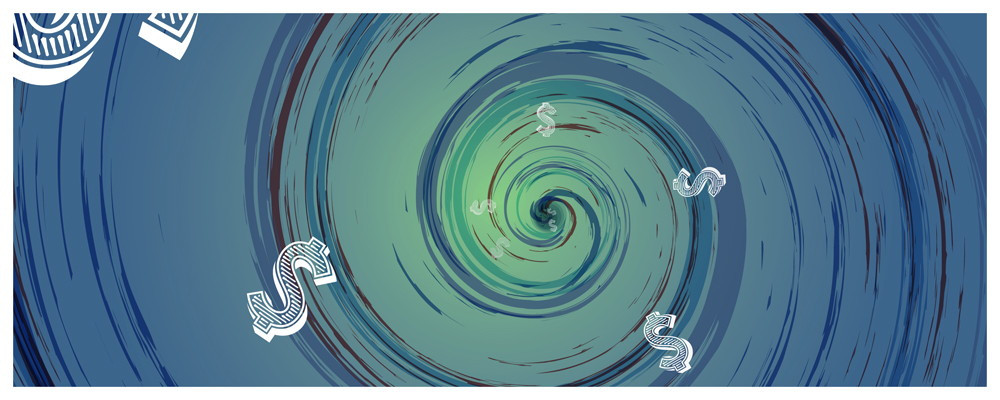The dangerous world of debt
Is living in the red becoming fashionable?
Think about how much of the money you spend every day is your own.
If you aren’t spending money that actually belongs to your bank or to a credit card company or to the government, you should consider yourself lucky.
Personal debt has been on the rise in Canada for many years. It has reached the point where the Bank of Canada announced in December 2011 that one in 10 Canadians is living with dangerous levels of personal debt.
Put another way, according to the Credit Counselling Society (CCS), nearly six in 10 Canadians report that they would be in dire straits if their next paycheque didn’t arrive for any reason.
“The main issue is the lack of financial literacy with today’s youth,” says Christi Posner, counselling team lead for the CCS’s Winnipeg office. “When you begin to work, no paycheque comes with instructions on what you’re supposed to do with that money.
“A lot of financial literacy comes from trial and error and learning from your own mistakes,” she says.
The current economic environment isn’t necessarily helping, either.
“We have very low interest rates, which are not motivating consumers to save, but instead they’re encouraging people to borrow money,” Posner says.
She says that 20 years ago, interest rates in the double digits made borrowing money a much less appealing way to pay for an education or a new car. Today’s low rates work to obscure or soften the prospect of eventual repayment.
But interest rates are not the whole story, either. The culture around consumerism has changed over time, Posner says, and saving has taken a back seat.
“If we look at 20 years ago or generations ago compared to today, people in the past were more inclined to save up for something first,” says Posner. “There was delayed gratification versus now there is more instant gratification.”
You don’t have to go far to find evidence of the shift.
From the lowest-ever financing plans offered by most car manufacturers to the buy-now-pay-later promotions at many furniture and electronics stores, it’s easy to live beyond your means while the payments pile up.
This change in attitude is compounded by another Canadian reality: wages are not keeping pace with inflation and the cost of living.
“It wasn’t that long ago that $5 could get you lunch, and today that’s probably closer to $10,” says David Rebeck, branch manager at the Winnipeg branch of the National Bank of Canada. “Fuel prices, housing costs and renting costs - just the standard costs of living have risen.”
In this perfect storm of financial hardship, there are two main factors that the average person can control directly: financial literacy and attitude.
Not very long ago, Jeremy Koop, 25, was caught in a cycle that is familiar to many people: he wasn’t really losing money, but he wasn’t really making any either.
“You get your paycheque and it’s enough to pay for your credit card bill, but then you don’t have enough money to live off of for the next two weeks, so you put stuff on your credit card, and you get your next paycheque and it’s enough to pay for your credit card bill,” Koop says.
Tired of being caught in this endless loop, Koop took advantage of a nice tax return to get himself into a more positive financial situation.
He set up a system of automatic withdrawals through online banking that would take his biweekly paycheque and divert it into many different savings accounts to set aside money for everything from his rent and phone bill to a vacation fund and emergency car repairs.
After all his expenses were covered and a little put towards general savings, the remaining money was his to live on for the next two weeks. He decided to withdraw the money and spend only cash as a way to better keep track of how much money he had to work with.
“If you have $200 in your pocket and you spend $120, you really notice the difference,” Koop says.
Posner says that students especially need to create workable budgets to reduce their reliance on debt.
“If students are graduating with a debt burden, they are limiting their options for which kinds of jobs they can apply for,” she says. “The mentality will become, ‘I need to make a certain amount of dollars or a certain salary every year in order to repay my debts.’”
Feeling pressured to accept the best paying job might limit the opportunities for growth, development and enjoyment in a new career, Posner says. Even with a new, potentially better paying job, debt will affect lifestyle decisions.
“You’re getting used to having a new salary, but a lot of that money is going towards student debt repayments, so you may not get to really live, you just get to exist.”
Published in Volume 66, Number 24 of The Uniter (March 21, 2012)






